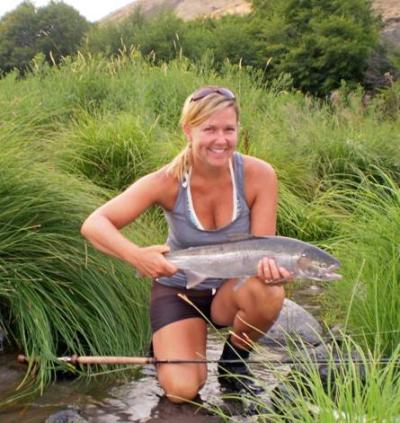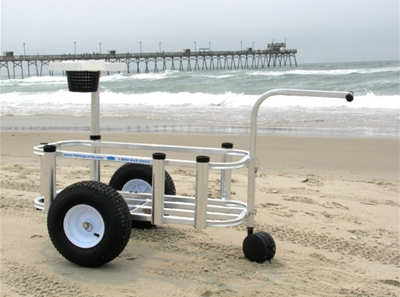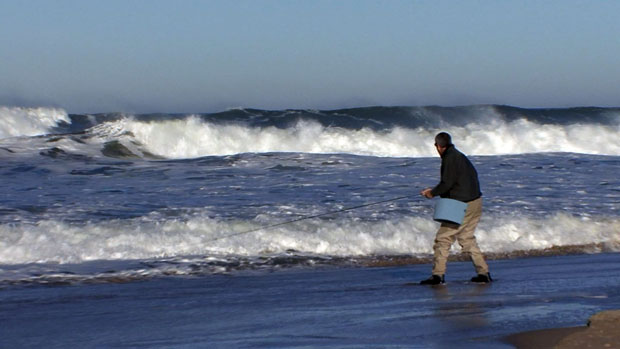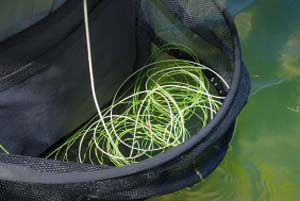Walk in fly fishing
[dropcap]F[/dropcap]rom the Pacific west coast to the Texas Gulf to Maine’s Atlantic coast and every coastal state in between there’s saltwater marshes, estuaries, rivers, canals and surf that support large numbers of briny oriented animals, or fish that can tolerate low parts per million (ppm) of saltwater. All of those animals come in a variety of species. From catfish to tarpon and flounder to stripers.
If you’re boatless, or as Simms puts it, “Think outside the boat,” then you have some serious researching to do to be successful at walk-in fly fishing. Books, magazines both online and print, some regional oriented blogs and fly shop blogs can be excellent sources of information. Forums, I’ve found, are the least reliable ‘unless’ there’s a strong and knowledgeable moderator. Zany claims and anecdotal gibberish should be left to political candidates and cable news network pundits.
Salt marshes can go far inland and produce, in Florida for example, 100-pound tarpon at spillways dozens of miles from sea, or in Georgia tailing redfish inland – miles from the coast.

An R. B. Meiser Highlander switch rod does the trick for this angler. The switch rod is probably the most useful fly angling tool ever devised. It’s a signature U. S. A. invention.
If there is bait in the surf, they will come.
To fish the surf for any species it is best approached by using tides, moon phases and calendar of seasonal migrations of both game fish and baitfish as your bellwether. Scout beaches you intend to fish right before the stripers, snook, black tip and spinner shark, pompano, jacks, bluefish or other species become hungry tourists at your beach.
Low tide
Do all your scouting at low tide. Significant terrain changes will be revealed like-sand bars, pot holes, rocks formations, outcroppings of coral and other structures – all factors to be remembered.
A large swale-like depression will many time hold fish as do rocks and other structures. Structures also have current influences that can drive bait into harms way.
Big sticks do it better
If you’re a west coaster, you’re already familiar with what Gulf coast and Atlantic seaboard fly anglers remain clueless and abysmally ignorant of. What is that? Spey and switch rods, and particularly the latter because they can be easily cast one handed or two handed. Some companies sell their switch rods at 12-feet, but switch rods start to get unmanageable for single handed casting if much longer than 11-feet, 6-inches.
Surf casting with a conventional overhand casting 9-foot, 9-weight with a stiff in your face breeze turns hopelessness into despair. High surf, as it’s called, makes for a really challenging fishery. When you choose to tackle it with conventional fly gear the difficulty factor rises. I’ve found that only on a calm day at sun-up or sundown with a favorable tide and moon phase does single handed casting with a conventional 9-footer hit pay dirt. Now, having switched to a switch rod my beach goings have been far more fruitful: More water is covered, longer casts are possible; big, bushy flies not an issue, punching through an ocean breeze is manageable and marathon search casting is physically doable.
The wind does strange things to the surf
Wind can whip up whitecaps. Crashing surf creates unseen water turbulence and spells trouble for any type of casting, and not the least troublesome is under tow.
For example. Alone, I was literally dragged into the Pacific Ocean while surf fishing on the west coast of New Zealand. Oddly, I didn’t lose my rod or panic. Swimming on my back parallel to the shore finally put me in calm water, but about a quarter mile out. A drifting log became my vessel. I stuffed my fly rod in the ass-end of my pants and kicked to shore. Talk about cold and exhaustion; Wow.

A Surf Caddy, like this one, makes life a ‘beach’. The pictured model can hold 8 eight rods, a cooler, tackle box, bait and everything you’d need plus some. Surf caddies vary in quality and price – $45 to $300.
Planning made easy
You can’t beat the cost of surf fishing or any walk in fly fishing for that matter, but there is planning to consider. For surf outings a surf caddy makes life a ‘beach’. So easy to push around and carry everything you could possibly need: Several rods, flies, towel, change of clothes, dry shoes, ice cooler, fillet knife – you name it, it’s on the caddy.
Unless you possess great dexterity or have practiced fingering line loops into your off hand, a casting basket would be advisable.
I use plastic ties to fold my rigged rods – just pop the two sections together and start casting.
[information]
Although Steve Knatner’s new book explains ‘how to’ walk in fishing South Florida, it’s filled with information that travels well: rigging, and most importantly how to fish different species. The detail on every aspect of fishing is over-the-top reliable. With this guide you won’t just be fishing, you’ll be catching. His surf fishing advise alone worth the book’s price. Steve has been a commercial fisherman, guide, casting instructor, fly tyer, fly fishing seminar producer, author and has had his articles published in every major magazine you can think of. Click here to view a copy or buy a copy . . .
[/information]








